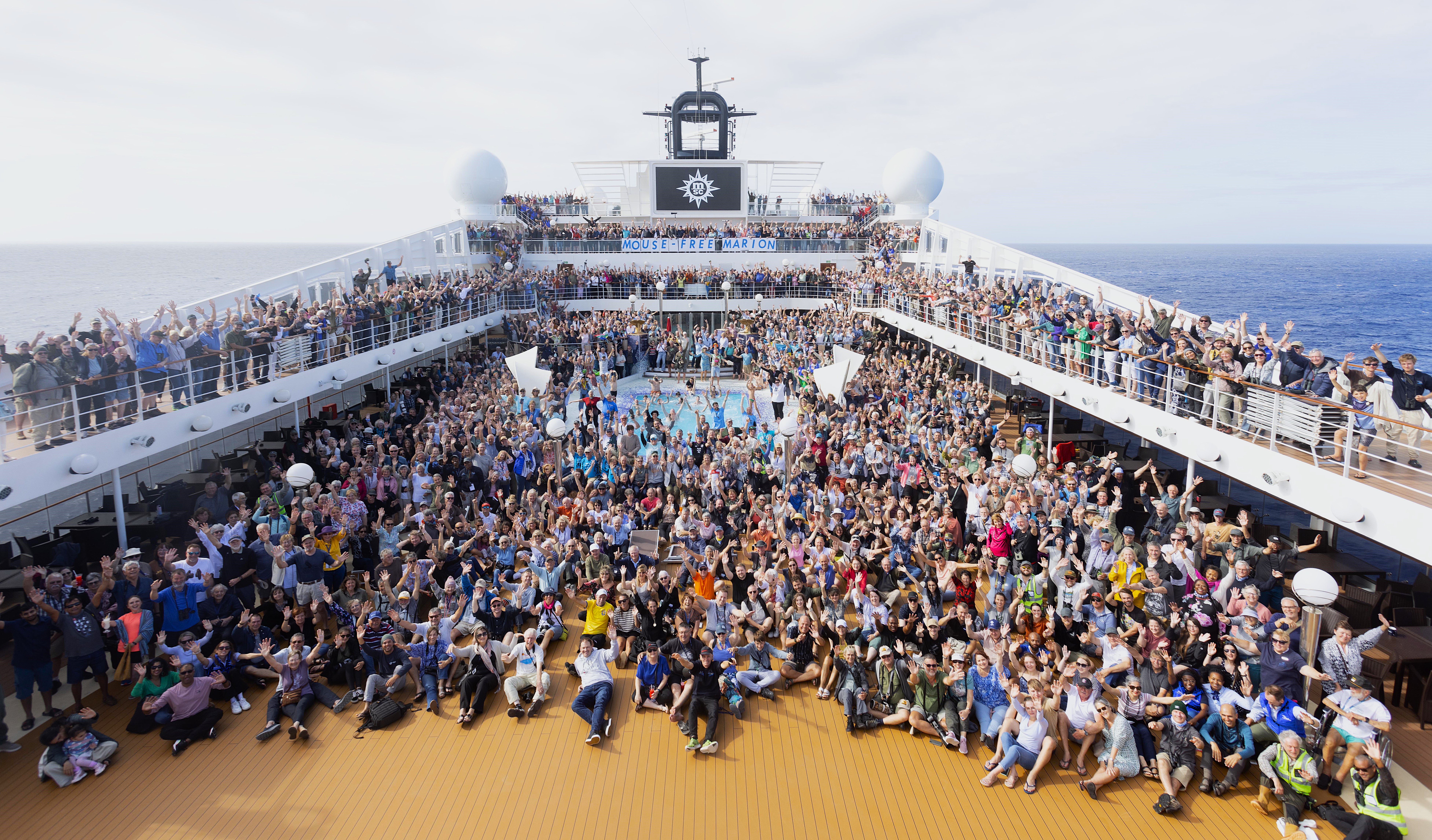
1900 birdwatchers gather on the MSC Musica in support of the Mouse-Free Marion Project, photograph by Cassie Carstens
The Emeritus ACAP Information Officer spent last week at sea helping fund raise over three and a half million Rands by way of silent and live auctions and by sponsoring hectares for the Mouse-Free Marion Project that aims to eradicate the island’s introduced House Mice that have turned to attacking and killing albatrosses and burrowing petrels. The following edited media release by BirdLife South Africa gives an idea of what transpired on the Flock to Marion AGAIN! 2025 voyage into the Southern Ocean aboard a luxury cruise liner.
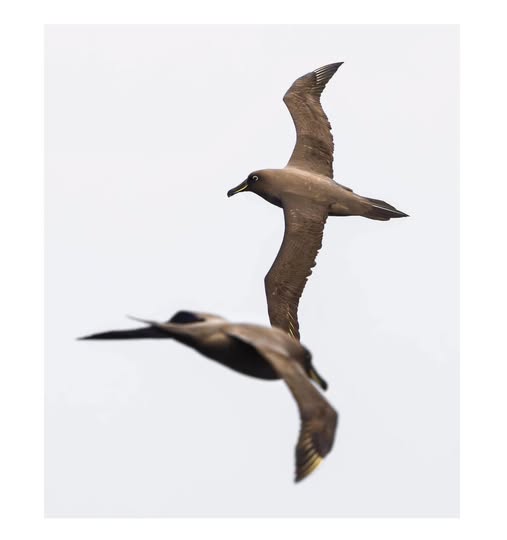
Sooty Albatrosses, photograph by Miles Cluff
“A voyage organised by BirdLife South Africa in association with the Mouse-Free Marion Project and hosted by MSC Cruises departed Durban Harbour, South Africa on 24 January, bound for the waters around South Africa’s sub-Antarctic Prince Edward Islands, with 1900 passionate birders and conservationists aboard, and returned on 31 January. Primarily a fundraising and awareness campaign, the voyage raised over R9 000 000 [for BirdLife South Africa and for the Mouse-Free Marion Project] through various sources for conservation causes, a staggering sum and testament to the importance of the Mouse-Free Marion Project, and the generosity of our passengers.
This voyage offered birders of all ages and experience levels a unique opportunity to appreciate the wide variety of seabirds that live in the Southern Ocean, many of which breed on Prince Edward and Marion Island, located 1900 kilometres from Durban, or roughly halfway to Antarctica. The islands are in a band of latitude long known by sailors as the ’Roaring Forties,’ due to the area’s fierce winds
The focus of the trip was to highlight the unfortunate plight that these seabirds face, namely predation by invasive house mice. The voyage also raised funds for the Mouse-Free Marion Project, a conservation campaign dedicated to restoring Marion Island’s ecosystem to a pristine state. Introduced inadvertently to Marion Island by sealers in the early-1800s, eradicating the invasive mice is the eponymous goal of the Mouse-Free Marion Project.
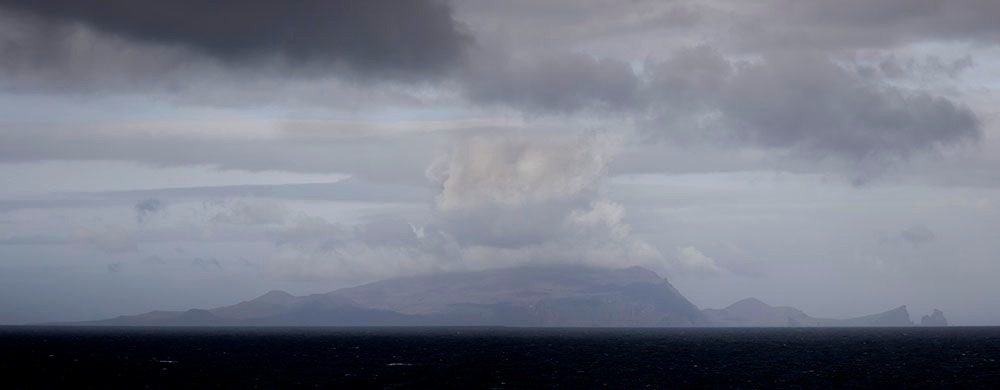
Prince Edward Island from outside territorial waters, photograph by Ken Findlay
Stationed around the ship were seabird and marine mammal experts, who facilitated the spotting and identification of seabirds, whales, and other mammals for the enthusiastic and excited passengers, for some of whom this was their first time birding at sea. Many of our passengers spent hours at a time on the outer decks of the ship, hoping to spot the seabirds that are only found with regularity in these remote waters to which no other commercial vessels usually travel. One would normally have to travel to this remote part of the Southern Ocean aboard the S.A. Agulhas II, South Africa’s polar research vessel. Luckily, the MSC Musica was more comfortable than a research vessel, with amenities like coffee, tea, and pastry stations found regularly throughout the ship.
Among the 1900 passengers aboard the MSC Musica were such luminaries of the scientific and ornithological communities as Peter Harrison MBE, who has spent his life studying seabirds and is the first Patron of the Mouse-Free Marion Project, and Professor Peter Ryan, Emeritus Professor of the University of Cape Town and former director of the FitzPatrick Institute of African Ornithology, among many other experts on various topics including seabird ecology, island restoration, and sub-Antarctic research.

Peter Harrison MBE, Mouse-Free Marion Project Patron, lectures on albatrosses aboard the MSC Musica, photograph by Mark Anderson
When birders were not gazing with wonder at the many species of seabirds from the decks of the ship, (species seen included Wandering, Sooty, Grey-headed and Indian Yellow-nosed Albatrosses, Macaroni and King Penguins, Southern and Northern Giant Petrels, Salvin’s Prion, and Blue and Kerguelen Petrels), they were able to visit the high-tech lecture venues on the MSC Musica, and learn from the experts on various topics, such as the ecology of Marion Island, the life cycle of the Wandering Albatross, and the logistics of eradicating mice from Marion Island.
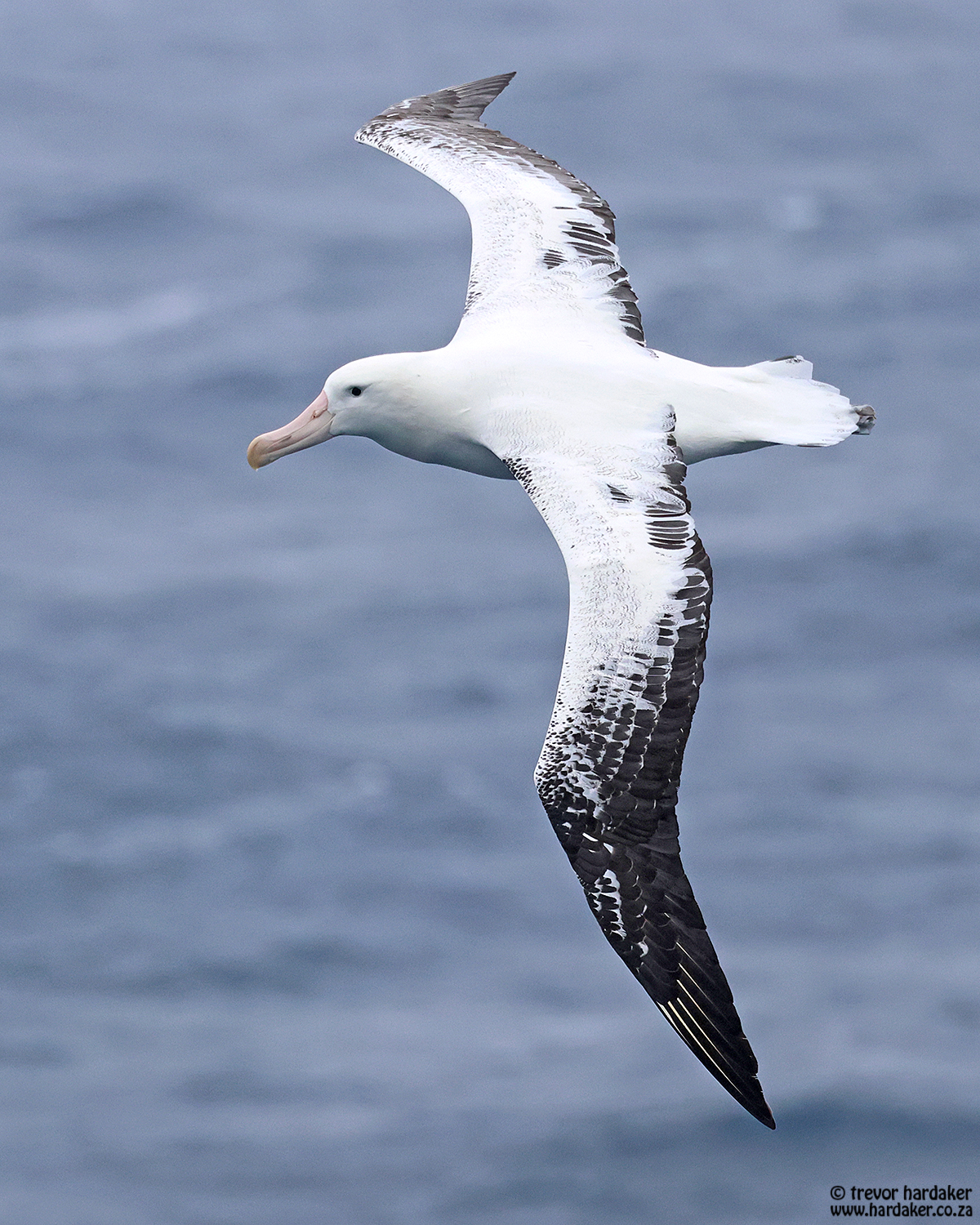 Wandering Albatross from the MSC Musica, photograph by Trevor Hardaker
Wandering Albatross from the MSC Musica, photograph by Trevor Hardaker
A voyage of this popularity and scale is a largely unprecedented undertaking by a conservation organisation; but in fact, this was the fourth trip of its kind hosted by BirdLife South Africa. Known as “Flocks at Sea”, the first of which took place in 2013, and continued in 2017, and in 2022 with the first “Flock to Marion”, these events have earned a reputation for being unique voyages, which attract attendance by people from all around the world and of all ages. Thanks to the dedication of our organising committee and the eager support of our passengers, we are very grateful to be able to add another successful trip to that list.”
John Cooper, Emeritus Information Officer, Agreement on the Conservation of Albatrosses and Petrels, 06 February 2025



 English
English  Français
Français  Español
Español 



 Wandering Albatross from the MSC Musica, photograph by Trevor Hardaker
Wandering Albatross from the MSC Musica, photograph by Trevor Hardaker
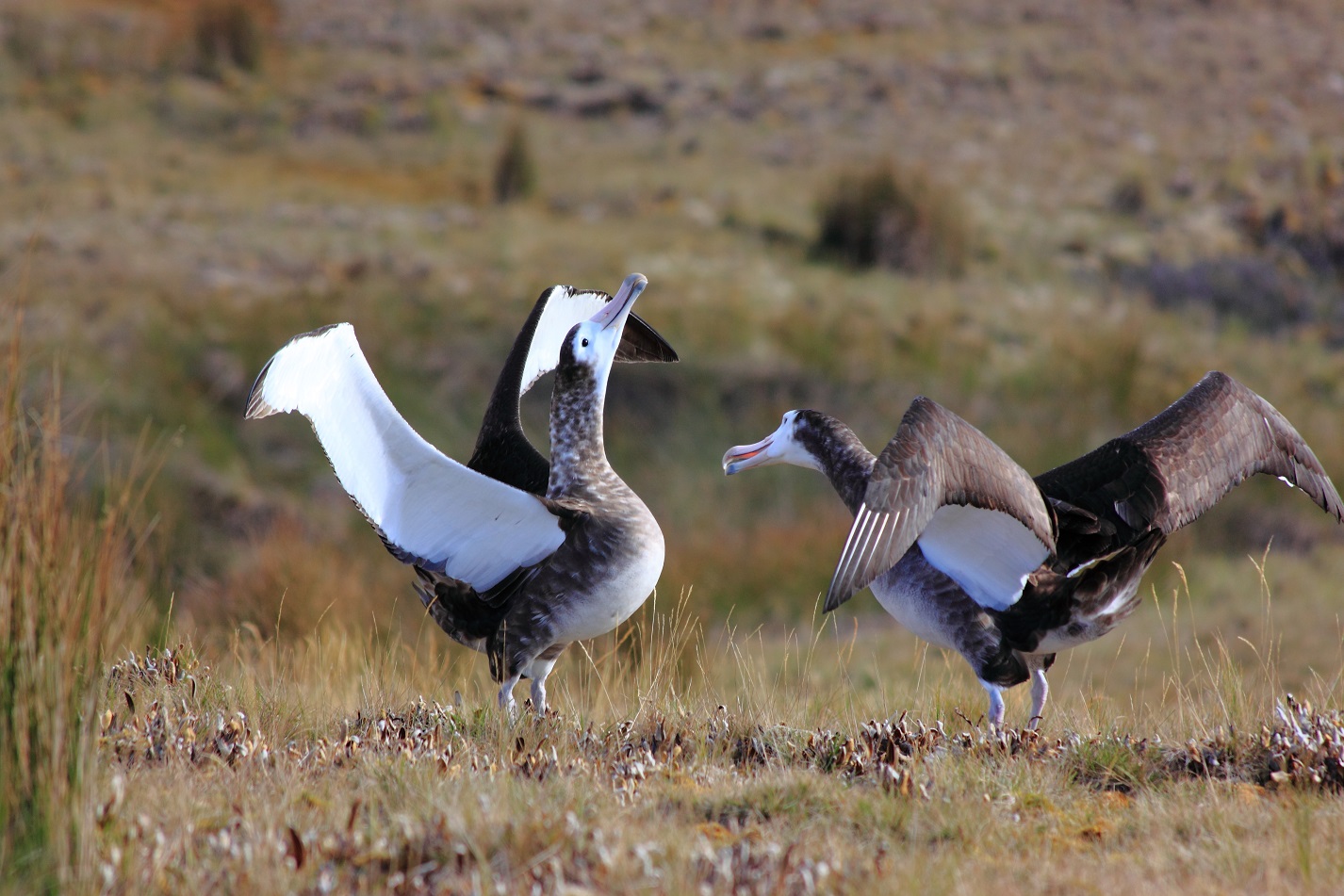



 N333, son of Wisdom, broods its second known hatchling in February 2023, photograph by Catie Mahon, U.S. Fish and Wildlife Service Volunteer
N333, son of Wisdom, broods its second known hatchling in February 2023, photograph by Catie Mahon, U.S. Fish and Wildlife Service Volunteer 